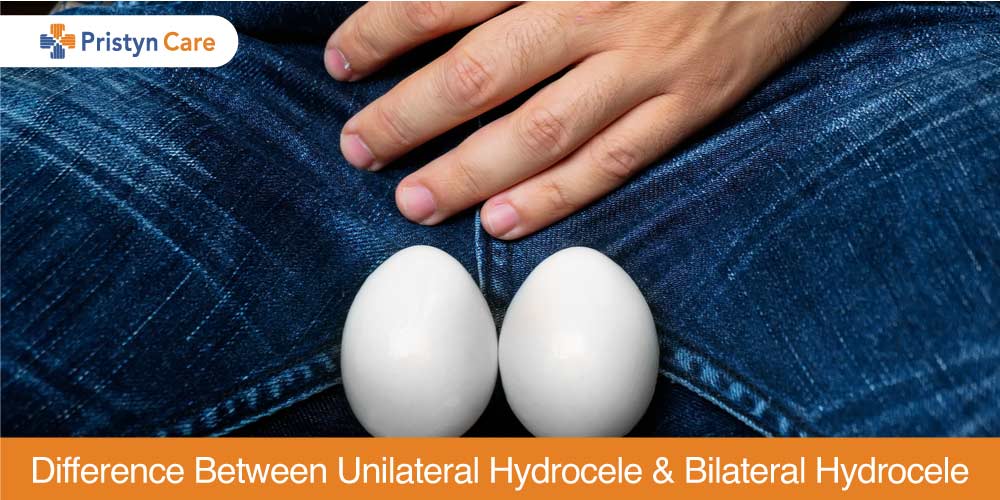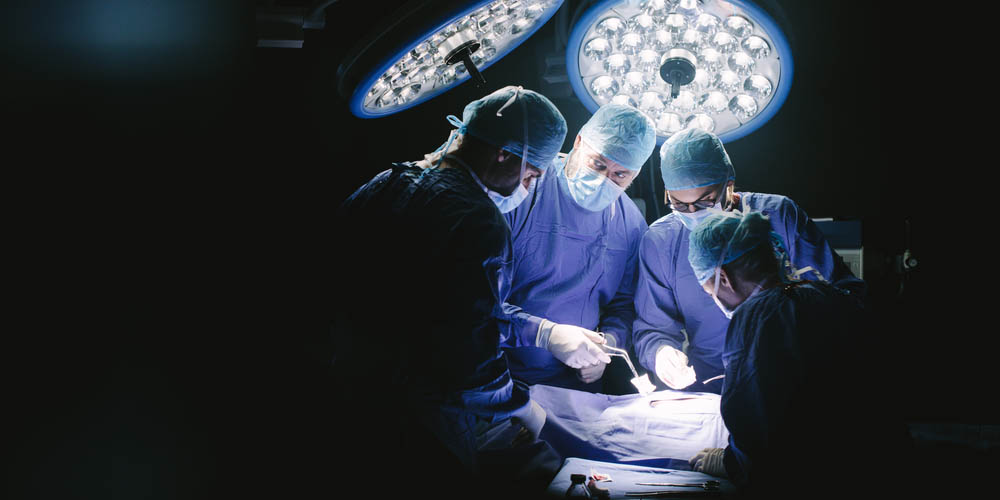
A hydrocele is a condition in males in which fluid accumulates in the sac around the testicles(scrotum) thereby causing and swelling of the scrotum.
Hydroceles can be both congenital (from birth) or non-congenital. The major cause of the congenital hydrocele is the abnormal development of the scrotal region during the gestation period. This abnormality can lead to the abdominal fluids entering the scrotum. When fluid enters the scrotum, it enlarges and a hydrocele forms. Congenital hydroceles are fairly common in baby boys. Nearly 1 in every 10 male infants has the condition of hydrocele.

Also, prematurely born babies are at higher risk of developing hydroceles. However, over time, the opening between the abdomen and the scrotum closes in most cases and the problem of congenital hydrocele resolves on its own.
On the other hand, non-congenital hydroceles develop as a result of scarring, injuries, inflammation, and trauma to the scrotal area. Non-congenital hydroceles are less common and only about 1 percent of older boys and adult men face the condition.
Hydroceles can also be classified based upon whether the scrotal swelling is on only one side or on both sides. This classification involves two types of hydroceles, Unilateral and Bilateral.
Table of Contents
Unilateral Hydrocele and Bilateral Hydrocele
Hydroceles can affect either one side of the scrotum or both sides. When a hydrocele is present on only one side of the scrotum, it is called a unilateral hydrocele. This happens when only one side of the scrotum fills with fluids. In this case, one side of the scrotum will swell and appear to be larger in size than the other. Unilateral hydroceles can affect both the left and right sides of the scrotum. However, the right side is more involved and thus hydroceles on the right side of the scrotum are more common than the left side.
Bilateral hydroceles, on the other hand, cause both sides of the scrotum to get enlarged. This is seen when fluid starts accumulating on both sides. In a large fraction of cases of bilateral hydrocele, both sides are equally affected. Because of this, the scrotum as a whole appears to be enlarged. However, in some cases, unequal swelling of the sides of the scrotum can also be seen.
Although hydroceles can be both unilateral and bilateral, unilateral hydroceles are more prevalent both in infants and in adults.
Fact: Studies show that right-sided hydroceles are most common, occurring in 60 percent of the cases. Left-sided hydroceles occur in 25 percent of the cases whereas bilateral hydroceles are seen only in about 15 percent of the cases.
Initially, hydroceles appear as a soft swelling in the scrotal membrane. In mild cases, they are minimal pain and do not affect the testes at all. However, in some cases, inflammation may also be present in the tube connecting the testes to the vas deferens (epididymis). This may lead to swelling in the testes as well. If this happens, you may experience severe pain and discomfort.
Complications that can arise due to hydrocele
Also, severe cases of hydroceles can even cause serious complications. If the size of the hydrocele is very large, it may lead to obstruction in the blood flow to the testes. This can cause the degeneration of testicular cells leading to testicular atrophy (testes diminishing in size). Very large hydroceles can also rupture due to the large volume of accumulated fluid. Also, infection can occur in the fluid and lead to a condition called Pyocele.
By now, you can have a clear idea that hydroceles can be really troublesome and discomforting. If left untreated, they can also lead to serious complications. If you are suffering from the condition of hydrocele and experiencing pain or redness in the scrotal region, do not take it casually. Consult a specialist doctor and undergo the best-suited treatment. (Also Read: Best Treatment for Hydrocele)

Also, do not worry much as hydroceles are completely curable. Various treatments are available for hydroceles. However, the only permanent solution for hydroceles is the surgical treatment called Hydrocelectomy.
Considering the associated risk of postoperative complications of surgeries, it is very natural to be skeptical about undergoing surgery. Breathe a sigh of relief, as with the development of Laser Hydrocelectomy, you don’t have to go through any of these.
Hydrocele Laser Treatment (Laser Hydrocelectomy)
Laser Hydrocelectomy is a modern and most advanced treatment for hydroceles. The entire procedure is minimally invasive and inflicts minimal pain. The procedure involves no bleeding and takes only 30 minutes. You can even go home the same day after the treatment. And, this is a permanent treatment which means that you won’t have to face the troubles of hydroceles ever again.
Fortunately, Pristyn Care has a team of experienced doctors who are capable of performing laser hydrocelectomy with great skill and efficiency. If you too are thinking of undergoing hydrocelectomy, the laser-based procedure is the best option for you. So you do not have to wait anymore, contact us today and get rid of hydroceles once and for all.







